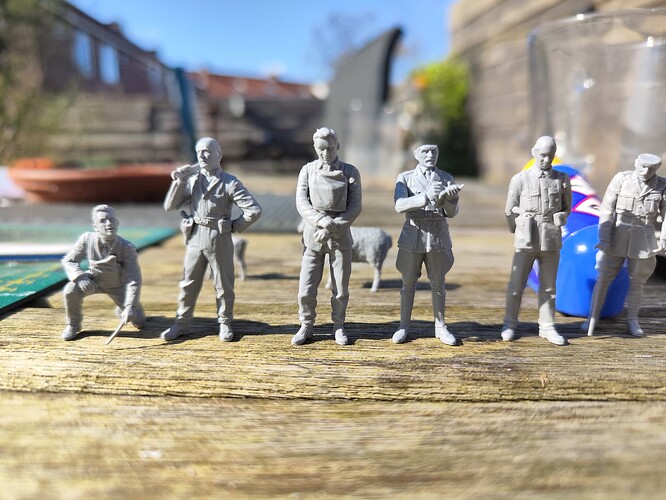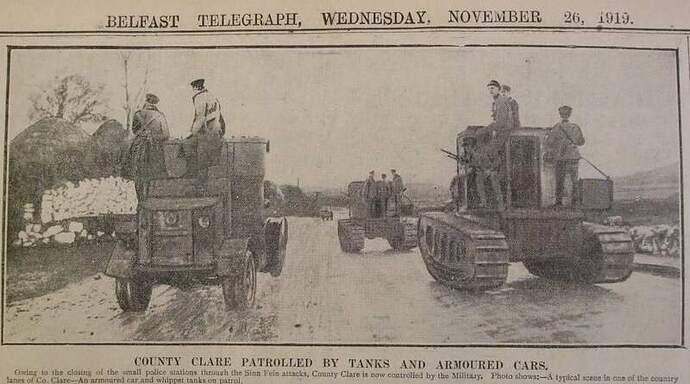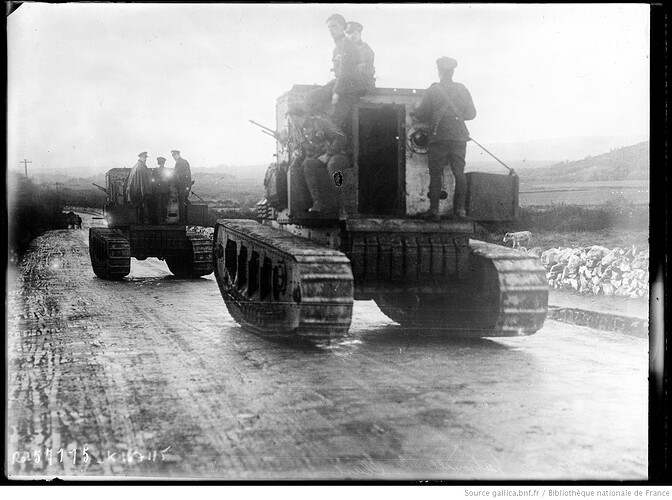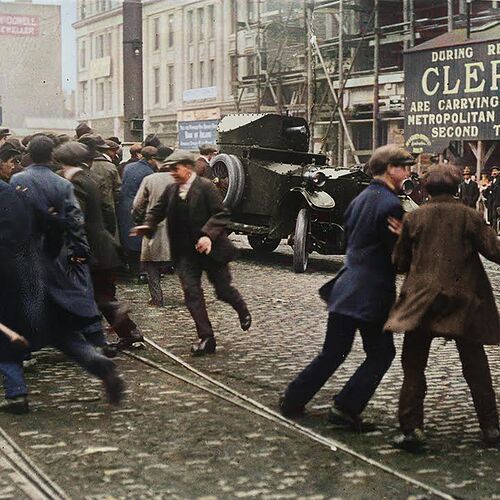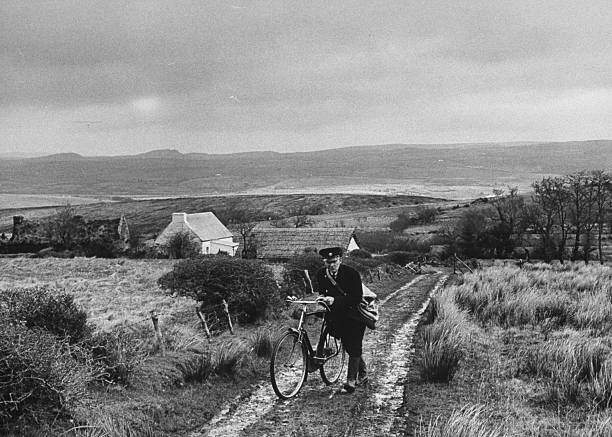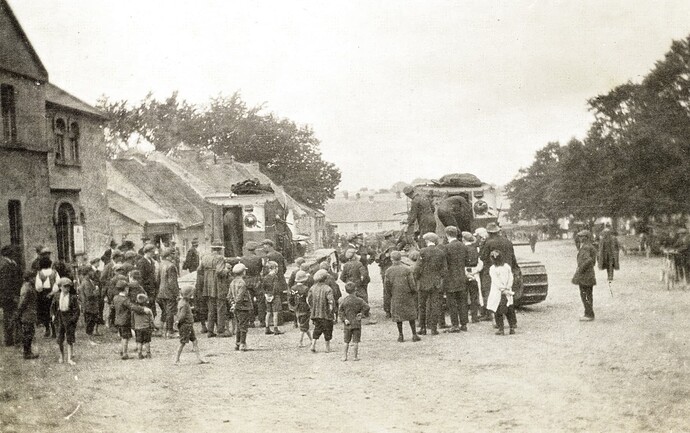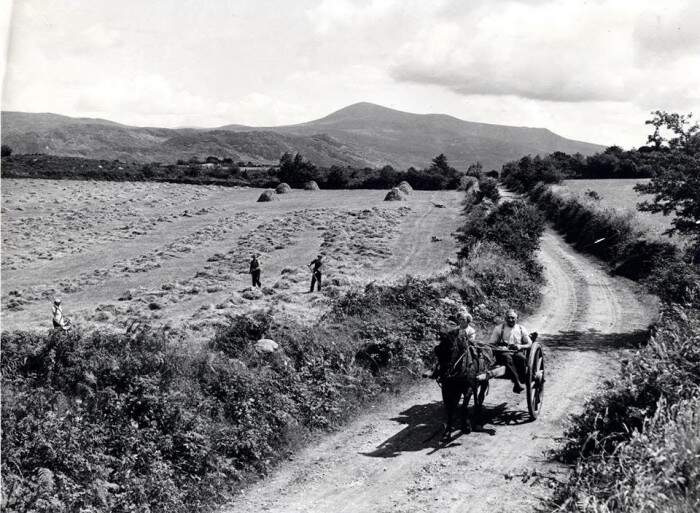Beautiful work Erwin !!!
Very , very cool .
Very kind of you to say so, Glenn! I really appreciate it…
Mighty fine work, Erwin, looks great!
Muchos Gracias, Steve!!!
The cast of the day is taking shape. Figures by MB and ICM. The mutton will be taken care of by Miniart.
I want none of the crew to wear helmets, as the scene doesn’t warrant this, so to baldly go where I have never been before, I will need to sculpt some hair on 2 of the crew…
Or replace the heads?
Ken
I could do that, but then I will have to source them first. I don’t have heads with a suitable hair style. And this is cheaper.
Does any one of you know what kind of roads there were in Ireland in 1918?
Dirt roads for sure but the main roads? Cobblestones? And in the same light grey as the dry stone walls?
@Karl187?
Rural roads and those outside main city roads would likely have been hard packed dirt or gravel/stone. Anything off main roads could have been anything from dirt to stone to rutted cart tracks with the grass in the middle.
A dry stone wall would have been mostly shades of grey as you guessed. Moss and weeds would often creep up from the bottom or lay on the top sometimes if you wanted to add a little color.
Cobbles could be any color really- whatever stone was locally mined would have predominated- but you couldn’t go wrong with grey shades and some brick orange and red. Maybe even shades of beige here and there too.
Thanks, it is always useful to get information from someone more or less in situ.
I was inspired by this picture:
The road looks like cobblestones with a film of mud on it?
Glad I could help you out a bit.
As for the pic- I’m not totally sure that is a cobbled road. Here is a different version.
Kind of hard to tell. However- as you mentioned- having loads of dirt on cobbles would make them hard to see. Check out this picture of Dublin.
A much better version of the same picture (albeit without the armoured car) indeed. I think I see several oblong and squarish shapes in the the road.
Yet I won’t copy the pic. The picture (according to the header) was taken in November, whereas I want to use the lambs in the MiniArt sheep set. Ofcourse, lambs in November are not that small , so a setting in spring will be more suitable. This will also give me the opportunity to put dandelions in the meadow or roadside (I will have to find out if sheep eat dandelions or not) .
Yeap @petbat that shows the sort of roads and lanes you would have encountered around 1919. There would not have been too many cars outside the bigger towns and cities.
In fact, even today were I live there are lanes where the grass grows in the middle ![]() !
!
I came across a few in my travels over there many years ago.
Thanks Peter! The first picture is post WW2 I think, as the bike has chrome wheels. Yet that doesn’t say anything about the road, which easily could have been from 1918… I recon the patrols mainly used main roads. I therefore will choose either a packed dirt, or cobbles…
BTW: sheep do eat dandelions since they help against stomach problems…
Yes it was 1966. Showing the road was never improved.
Armoured car crews often wore leather flying helmets. Don’t think respirators would have been carried in Ireland.
Good point… How about tank crews?
Tank crews were issued with a leather crash helmet which was unpopular because it resembled a German stahlhelm. Mostly they wore the soft peaked cap or Tommy helmet.
